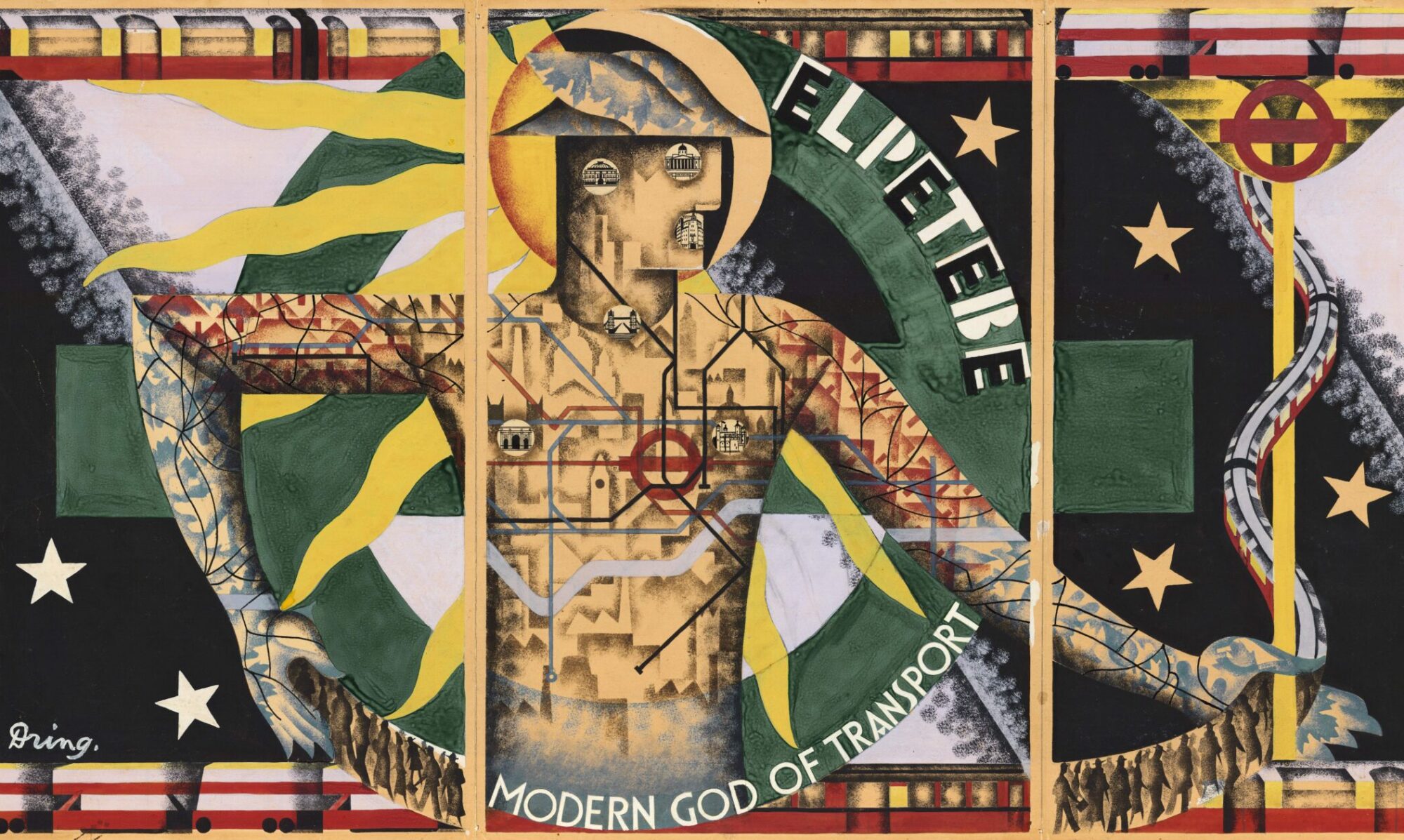
Looking back at 1990s representations of cyberspace always makes one feel alienated, a bit dislocated, and amazed at the same time. Did the American and Western European grasp of the World Wide Web really mix it with imaginations of cyberspace, all of the time? How could the mundane interfaces, modems, and slowly loading websites give rise to such an enthusiastic mapping of online spatiality, creating an unique visual culture of new cyberspaces? Some explanations for this are easier to give: Cyberpunk, Gaming Cultures and Media Arts had been engaged with online spatiality before the Web grew exponentially in a short time. Interlinking public, and especially urban space with representations of digital cities and information landscapes also did not start with the Web, as Kirsten Wagner has shown as early as 2006 (Wagner 2006). Yet some of the Web’s practices became quickly engaged with a translation of urbanity into cyber-urbanity, and affording a new situationist dérive while surfing. John Perry Barlow’s “Declaration of Independence” attempted to remove the cyberspace from the realm of old statehood and legality, while addressing its representatives at the highly localized 1996 World Economic Forum in Davos.
A lot of this resonates in and with Martin Dodge’s and Rob Kitchin’s seminal work of “Mapping Cyberspace” (2000), which we want to revisit here. For them, the “Web has become such a powerful interface and interaction paradigm that is the mode of cyberspace, particularly for the mass of users who only came online since the mid-1990s.” (Dodge/Kitchin 2000, p. 3). Along with Dodge and Kitchin, a slightly more systematic explanation can be made about the dynamics between locating the Internet, and the Web, topographically while at the same time accounting for its feelingly new information spaces and attaching a topological spatiality to them. Relations between topography and topology are, as I would like to argue, always shifting and relational, thereby relying on the evaluations of what kind of indexicality a mapping wants to achieve. So neither is topography bound to mimetic mappings of actual geographic space, nor is topology something only to be found in the realm of abstract diagrammatics and mathematics that refrain from any geo-indexicality. Methodologically, Dodge and Kitchin appropriated the whole range of digital cartographic options at hand, including a multitude of distributed mappings of geographers at universities and telco companies. Geo-indexicality thus almost always remained topical, even if it was absent in representations of, let us say, a hyperlink topology between websites like Ben Fry’s Valence (1999). “[G]eography continues to matter, despite recent rhetoric claiming the ‘death of distance’.” (Dodge/Kitchin 2000, p. x.)
Dodge’s and Kitchin’s systematic classification of Internet mappings has held up until today; maps can either be static, animated, interactive and dynamic. And already their sequencing of chapters gives a clear indication on the how-to of their epistemic practice, starting with topographies of physical locations of ICTs (chap. 5), and moving on to topologies of information spaces (chap. 6). They do not stop here, but also map out asynchronous social media of cyberspace such as email, mailing lists, and newsgroups (chap. 7) before turning to sychronous chat interfaces, maps of MUDs and virtual worlds (chap 8), and finally, imaginative mappings (chap. 10). Rereading those chapters evokes the kind of strange feelings I mentioned in the beginning. Why did even specialists like Dodge and Kitchin consider both the collected representations and the Web as cyberspace? Most mappings were aimed at localizing either the infrastructure, or its cooperative practices. Science Fiction was given its due for naming the new navigable spaces “cyber”, though. References to cybernetics, however, did not matter for Cyber Geographies in the same way they did for media theory.
An integral part of Dodge’s and Kitchin’s two books were its websites, mappingcyberspace.com and cybergeography.org. Mappingcyberspace.com mainly accompagnied the book’s publication, but also invited a general public to join the Cyber Geography Research email news bulletin (written by Martin Dodge) and the Mapping Cyberspace list which was “open to all”. Please note its “It is not just for academics” slogan. The Mapping Cyberspace list has been kept alive until about 2008, and has become a spam circulation machine since 2016.
Cybergeography.org did put more emphasis on a coffee table like atlas/homepage representation in which the images figured center-stage. It is still online, but has not been updated since 2007. Please note the plural here: as opposed to the book, the homepage provided an atlas of plural cyberspaces.
Most of the maps at hand for the two books and the online atlas had already been produced with software-based tools that combined network-analytical and statistic methodes. These specialised and often hand-tailored programs are made part of the critique of digital cartographic representation occasionally. But generally, they did not enter the center-stage of Dodge’s and Kitchin’s argument: Cyber Geography was not Software Studies avant la lettre. In many ways, especially the mappings of new information spaces were based on typical arc-node models and 3d visualisations of what was called “virtual reality” back then. Other more experimental modes of visualisation, like an AI-supported representation of Yahoo’s categories (ET-Map, 1999) or a cobot map of the social structure of LambdaMOO (2000, cf. Isbell et al. 2006) were also put to use. I would argue that all of these mappings produced a performative practice of cyberspacing, thus creating what Manuel Castells (2000, p. 355) has so aptly called a “culture of real virtuality”. Yet even the most abstract topological representations demand for constant relocalisation: every figure yearns for its ground, which in most cases is still a two-dimensional map in which data flows can be depicted. Cyber Geographies were, in practice, an experimental and performative exploration of these spaces. At some point, topological abstraction and relationality were able to become a new digital topography, reversing conventional understandings of what was topographical, and what topological.
But there is another reason to explain their trajectories in 1990s media culture: The Early Web was characterised by what I would like to call circulating indexicality. Both Cyber Geographies and the web-cartographical work on portals, catalogues, search engines, and even meta search engines dealt with a domestication of hyperlinks ‚in the wild‘. While media geographers approached that indexicality externally and in search for spatial reference, search engine algorithms, indexes, metrics, spiders, and crawlers allowed for a machinic, internet-intrinsic approach. Portals and catalogues like the original Yahoo used human classification and recommendation work to make the Web and its circulating indexicality navigable for the user.
The wild indexicality of hyperlinks was not necessarily related back to a (distributed) database structure. Menus and sitemaps only provided a navigable structure for complex stand-alone websites. But the affordance of the hyperlink did not provide this structure per se, it had to be afforded by handwriting HTML, or CMSes and site management software like Dreamweaver, GoLive or Allaire, a Windows-based program I used to adminstrate my first homepages with. The Early Web’s structure was a structure of ill-structuredness, to borrow from Susan Leigh Star’s (1989) work on “the structure of ill-structured solutions”. Its circulating indexicality was prone to a lot of 404 “site not found” errors. The Web’s lack of an infrastructurally administrative order turned websurfing into a media practice of confusion/obscurity (“eine Medienpraxis der Unübersichtlichkeit” in my German media-theoretical language).
Nonetheless, aggregating link structures in the databases of search engines made the Early Web navigable and habitable in the long term. To index the Web, search engines combined data base technologies with software that aggregated the hyperlink network structures. Spiders, webcrawlers and robots introduced a first shift to automation in web cartography. Handmade recommendations and classifications of links in library science-like category systems existed parallel to the automated, rhythmically repeated crawling and spidering of the search engines‘ agents. Follow the hyperlink was the categorical imperative of this ongoing machinic exploration. While catalogues and portals created relevance by human practices of evaluation, the search-engine based operations were notably in need of algorithmic evaluation. The aggregrated link structures thus became part of a database of all connections, e.g in the case of Altavista, Lycos or Fireball. Relevance of search results was not a given, though, and was only partly remedied by meta search engines that listed the different heterogeneous indexes. It took Google’s page rank algorithm to turn that wild and circulating indexicality into something that would mainly be handled by one search engine.
Both infrastructurally and semiologically, Cyber Geographies and search engines were two sides of one Early Web coin. But what became of their shared circulating indexicality once the Web developed into a place of more and more regulated flows that gave rise to what we now call Web 2.0 and APIs? How can Web/Biz 2.0 practices be considered as part of yet another topological shift? This is where Tatjana’s side of the narrative starts.
This is the typescript of my contribution to #thewebthatwas, Amsterdam, July 21, 2019. If you are interested in the slides of our talk on „Cyber Geographies, Web Topologies“ just drop me or Tatjana Seitz an email.
References
Castells, M. (2000) The Rise of the Network Society. 2nd edn. Oxford; Malden, MA: Blackwell Publishers.
Dodge, M. and Kitchin, R. (2000) Mapping Cyberspace. London; New York: Routledge.
Dodge, M. and Kitchin, R. (2001) Atlas of Cyberspace. Harlow: Addison-Wesley.
Isbell, C. L. et al. (2006) ‘Cobot in LambdaMOO: An Adaptive Social Statistics Agent’, Autonomous Agents and Multi-Agent Systems, 13(3), pp. 327–354. doi: 10.1007/s10458-006-0005-z.
Star, S. L. (1989) ‘The Structure of Ill-Structured Solutions. Boundary Objects and Heterogeneous Distributed Problem Solving’, in Gasser, L. and Huhns, M. N. (eds) Distributed Artificial Intelligence. London: Pitman; San Mateo, CF: Morgan Kaufmann (Research Notes in Artificial Intelligence), pp. 37–54.
Wagner, K. (2006) Datenräume, Informationslandschaften, Wissensstädte. Zur Verräumlichung des Wissens und Denkens in der Computermoderne. Freiburg: Rombach.
